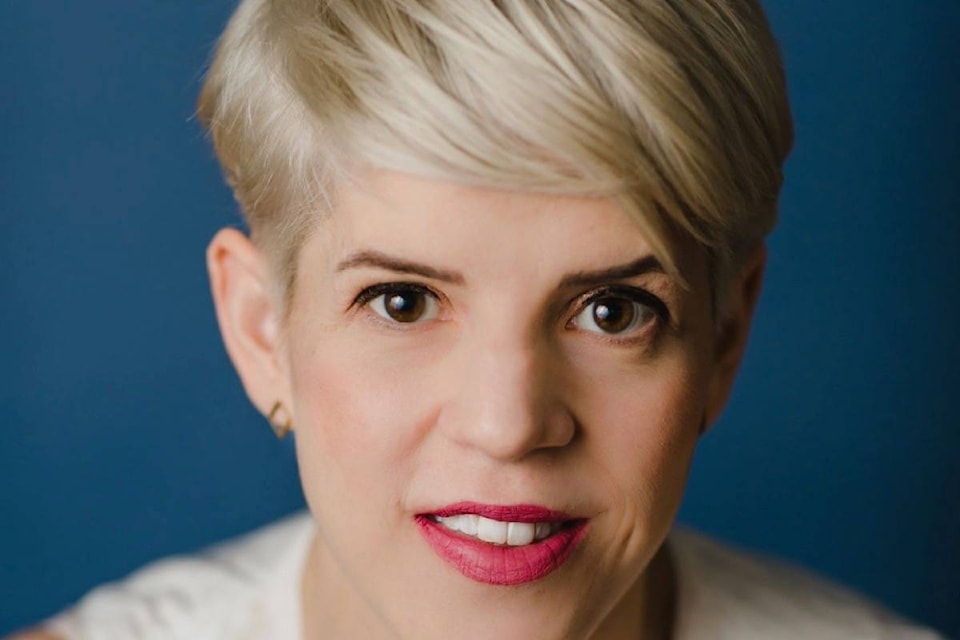Bethany Lindsay, a web writer for CBC Vancouver, was in the CBC newsroom, watching tape roll in from the field as last year’s wildfire season exploded throughout the province on July 7, 2017.
“I’ve been a journalist in B.C. for more than 10 years, and I’ve covered disasters, like floods and fires. But this covered such a huge area, for so long, and affected thousands of people; it was like nothing I’d seen before. The Elephant Hill wildfire burned through community after community. I felt that it was going to go on forever, and never let up.”
Although Lindsay had covered wildfires in the past, it wasn’t until a publisher approached her about writing a book about last year’s fire season that she considered the idea. “But I knew it needed to be covered.”
The result is British Columbia Burning: The worst wildfire season in B.C. history, published earlier this year by MacIntyre Purcell Publishing Inc. To write the book, Lindsay says she began by reading through everything written about the wildfires by various news outlets: “Papers like yours.”
READ MORE: A review of British Columbia Burning.
She wanted a different perspective, however, and began making a list of people who popped up in the news in relation to the wildfires, as well as people she knew in the Interior. “I found that people really wanted to talk. A lot of people are still working through what happened, and it’s therapy for some people to tell their story and work through it.”
The first line of the book’s Introduction reads “When Angie Thorne saw the thick, black smoke spilling into the sky above the Ashcroft Indian Band reserve on July 7th, she knew she wasn’t going to make it the rest of the way into Kamloops to get her shopping done.” Thorne—whose home on the Ashcroft Reserve was destroyed on July 7—was interviewed extensively by Lindsay, and her story threads its way through the book.
“I saw Angie on TV the very first day of the fire. I saw the pictures of the first time she saw her home, saw the emotion on her face, and knew I had to talk with her. She was so honest and open, and her story was such a moving one.”
Another story that struck Lindsay was that of Clinton store owner Jinwoo Kim. “When Clinton was cut off, he made it his mission to ensure everyone had what they needed. When it was evacuated, he knew the firefighters would need supplies and gas, and volunteered to stay. He and his brother Sang worked 19-hour days keeping the store open, and kept prices at cost. He didn’t make any money; he did it because Clinton was important to him and has always been good to him.”
Lindsay says that when doing research for the book about past wildfires, she was struck by how little has changed.
“Changes in technology have affected every aspect of our lives, but fighting fires now is the same as it was 100 years ago: people on the ground with basic tools. Now they get help from the air, but the basic practices of fighting fires are virtually unchanged.
“And I was surprised to find out how much controlled burns have been cut back. Almost everyone I spoke to mentioned the lack of controlled burns over the last few decades as something that led to last year. We’re so far behind on clearing hazardous fuels and protecting our homes. There are calls every year to do more. It will be interesting to see if after last year the government says they need to do more.”
Lindsay praises photo editor Kelly Sinoski, who found and selected the many photographs used throughout the book.
“Kelly took it upon herself to do the pictures. She searched Facebook and social media, looking for photos, and got great shots from firefighters who were there, of regular people who were evacuated and affected. She got some amazing photos.”
Lindsay says that no one had seen anything like what happened on July 7 last year. “Now we know what the possibility is for the future. We’ve already had a rough start to the fire season, and individual property owners and local governments need to look at what to do to protect homes and properties.
“We’ll have another fire season like 2017. Maybe not for 20 years, but we’ll have one.”
editorial@accjournal.ca
Like us on Facebook and follow us on Twitter
